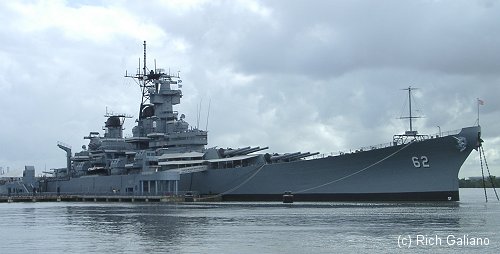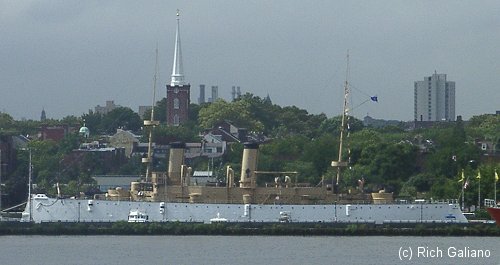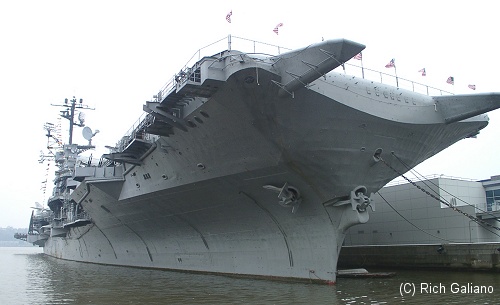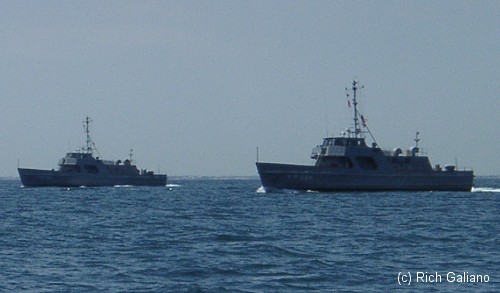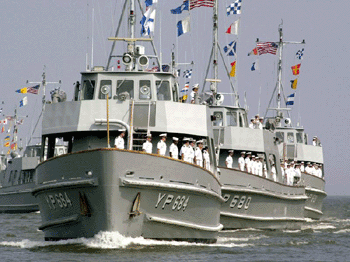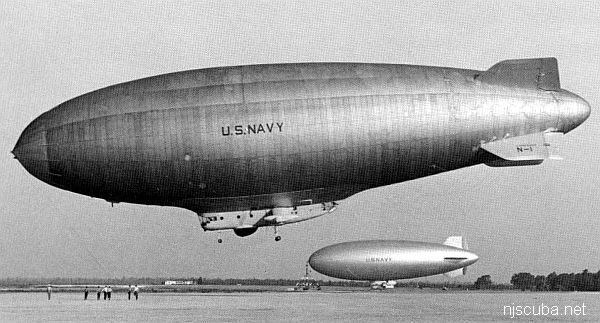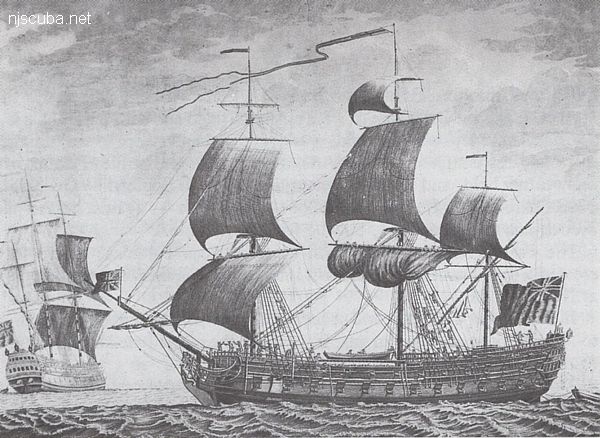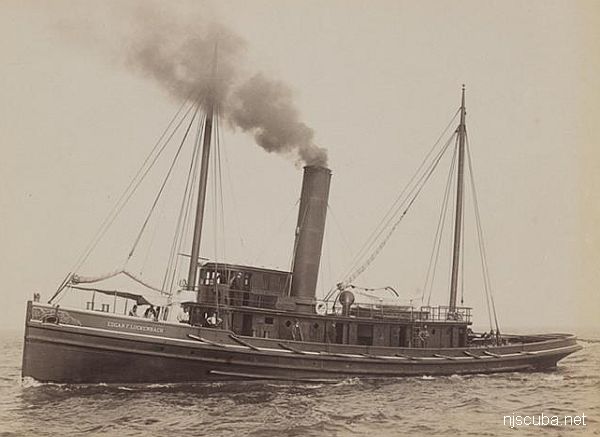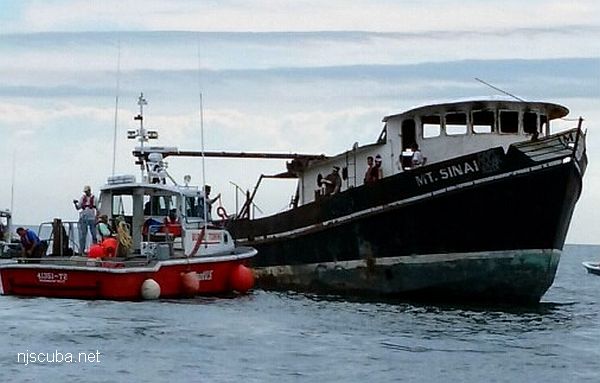Warship
A number of small warships are sunk in New Jersey and New York waters.
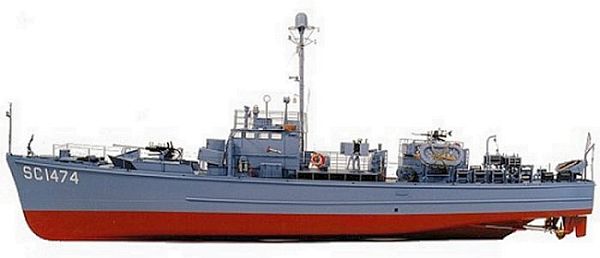
A subchaser was a small coastal patrol vessel of World War I or II. Subchasers were lightly armed and even more lightly constructed, mostly out of plywood, powered by two diesel (WWII) or three gasoline (WWI) engines. Roughly the same design was used in both wars - 110 ft long, about 100 tons. Almost a thousand were built over both World Wars, and several are lost in the waters around this area. Many private yachts and some larger fishing trawlers were converted to perform this function also, like the Tarantula and the Moonstone. Conversely, some subchasers were converted to other duties after the war, such as the Bronx Queen, pictured below in military trim. Real subchasers were designated SC-, while converted yachts were designated SP-, PY- ( patrol yacht ) or PYc ( patrol yacht - coastal. )
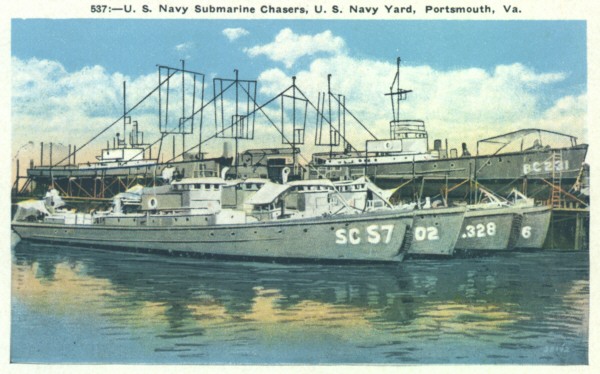
WW I submarine chasers
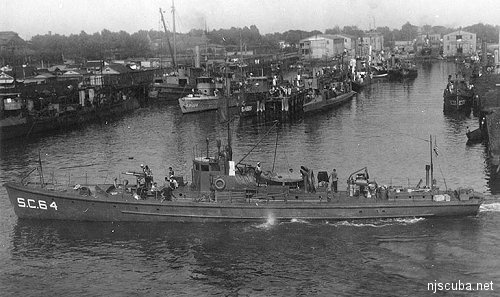
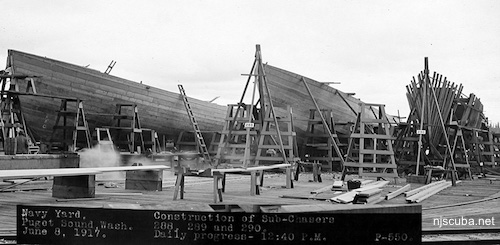
 World War I |  World War II |
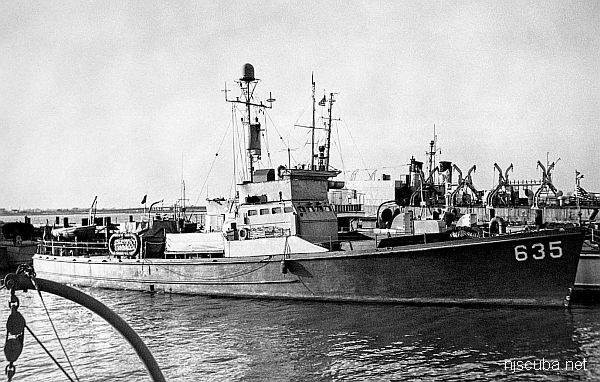
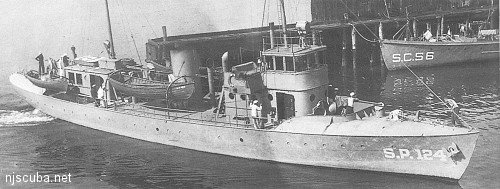
Vessels like this were too small and short-ranged to be truly ocean-going warships. Instead, they performed coastal patrol and escort duties, freeing larger and more capable vessels for trans-Atlantic convoy escort and combat overseas. They were crewed mostly by reservists
As the name indicates, a subchaser's main duty was to hunt prowling enemy submarines - the only type of enemy they were ever likely to encounter in home waters. In the Pacific theatre, a subchaser is credited with sinking a Japanese submarine, but their main function was as deterrents and annoyances to submerged submarines, although on the surface a U-boat could both outrun and outgun a subchaser.
Subchasers also performed a great deal of search and rescue, and some were taken overseas, where their maneuverability and shallow draft made them useful as support craft in amphibious landings. The famous PT boats of WWII were smaller still, much too small to be useful in the stormy northern oceans.
Several subchasers are sunk in area waters: from World War I, the SC-60 and SC-209, which have never been found and probably never will be, and from World War II, the SC-635 Bronx Queen lies directly below the shipping lane at the mouth of New York Harbor. Converted patrol yachts Tarantula and Moonstone are popular deep dives. The Ida K was another subchaser turned fishing boat, SC-1282.
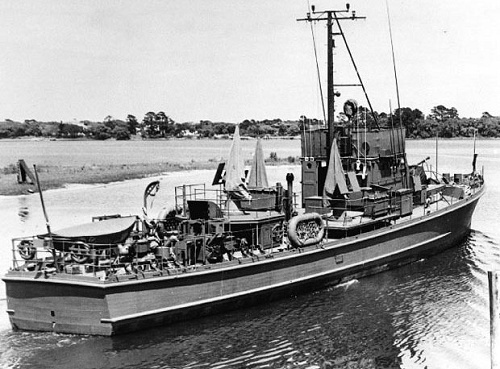
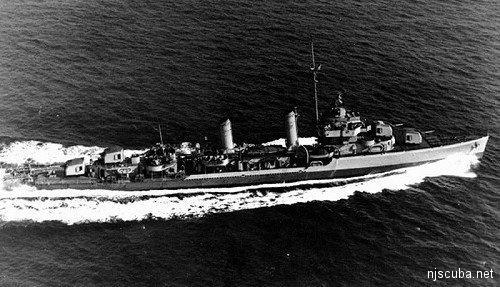
While the battleship got all the glory in the gun-navy, the real backbone of the fleet was the destroyer. Fast, maneuverable, heavily armed for their size, but virtually unarmored, "tin can" destroyers performed tasks ranging from anti-submarine and anti-aircraft escort to radar picket, fast transport, and search and rescue. They also performed dangerous close-in shore bombardments during every major amphibious landing, during which several were damaged by return fire from shore batteries.

Destroyer escorts were a cheaper alternative to destroyers. Smaller, slower, and more lightly armed than destroyers, they could be constructed much faster and saw heavy use as convoy escorts. One obvious visible difference is the lack of enclosed gun turrets. Only one "DE" is sunk in our waters, the USS Solar, and you can't dive it. Destroyer Escorts were built to military standards, as opposed to the Patrol Frigate, a coastal vessel that was somewhat smaller and more lightly armed but could be acquired faster because it was built to civilian standards.
In the modern navy, the destroyer has become the main class of surface combatant, equal in size and power to the cruisers of old. In fact, the latest class of Navy cruiser is built on a destroyer hull, the difference being only in weapons fit and mission. The destroyer escort evolved into the modern fast frigate - still a cheaper alternative to the destroyer, although considerably larger and more capable than their forebears. And like their forebears, modern frigates and destroyers go in harm's way more than any other navy ships.
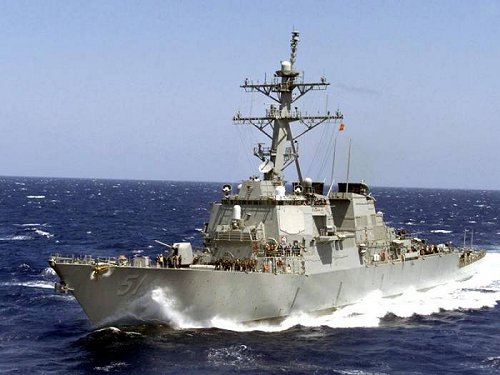
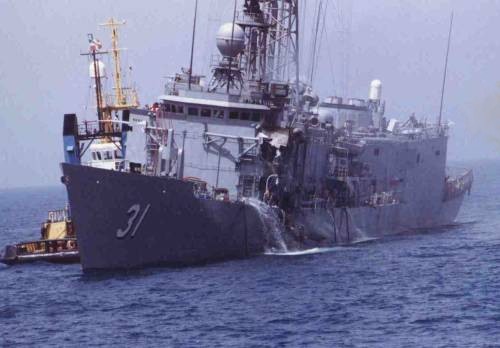
There are four US Navy destroyers and one destroyer escort in the region:
- USS Jacob Jones DD-130
- USS Murphy DD-603
- USS Turner DD-648
- USS Baldwin DD-624 - scuttled in very deep water, 1961
- USS Solar - DE-221- scuttled in very deep water, 1946
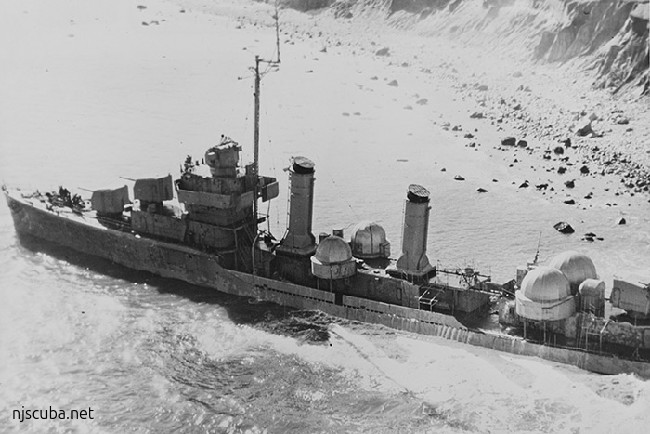
Several old wooden sailing warships and the pre-World War I armored cruiser USS San Diego are also sunk in our waters, as well as a number of submarines. Artificial reef USS Algol also had a long military career, and several small Coast Guard vessels have been sunk as reefs. See also: Wartime Losses.
Some preserved warships in the region that are open to the public:
